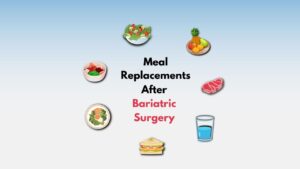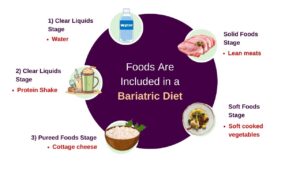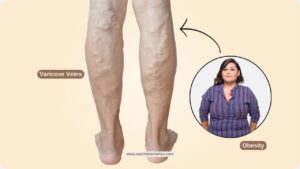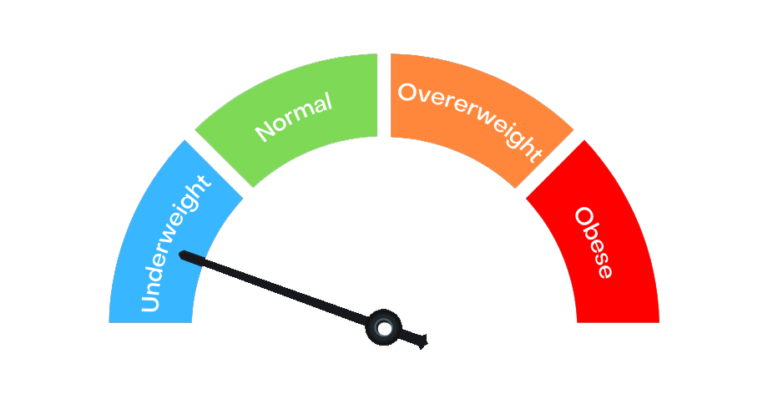Hernia and Obesity - Can Losing Weight Help a Hernia?
Hernia is a medical condition that occurs when an organ or fatty tissue squeezes through a weak spot or opening in the surrounding muscle or connective tissue. It usually appears as a bulge or protrusion under the skin and can cause discomfort or pain. Hernias can develop in various parts of the body, but the most common types occur in the abdominal area.
Here are some of the most common types of hernias:
Inguinal Hernia: This type of hernia is the most common and typically affects men more than women. It occurs when a part of the intestine or fatty tissue protrudes through the inguinal canal, which is located in the groin area.
Femoral Hernia: This type of hernia is more common in women, particularly those who are pregnant or obese. It occurs when a part of the intestine or fatty tissue pushes through the femoral canal, which is located near the groin.
Incisional Hernia: This type of hernia can occur in individuals who have had abdominal surgery. It happens when the tissue or intestine pushes through the site of a previous surgical incision or weak spot in the abdominal muscles.
Umbilical Hernia: This type of hernia is common in newborns and infants. It occurs when a section of the intestine protrudes through the abdominal muscles near the belly button (umbilicus). In many cases, umbilical hernias resolve on their own as the child grows, but sometimes surgical intervention may be required.
Hiatal Hernia: This type of hernia occurs in the upper part of the stomach, where it pushes up through the diaphragm muscle. Hiatal hernias are usually associated with a weakness in the diaphragm, allowing the stomach to move into the chest cavity. They are often associated with gastroesophageal reflux disease (GERD) and may cause symptoms like heartburn and chest pain.
The main symptoms of a hernia include a visible bulge or swelling, pain or discomfort, especially during physical activity or lifting heavy objects, a feeling of heaviness or pressure in the affected area, and sometimes difficulty with bowel movements or urination.
Treatment for a hernia typically involves surgery to repair the weakened or torn muscle or tissue. In some cases, a surgeon may use mesh patches or other materials to reinforce the area and reduce the risk of recurrence. For smaller hernias that are not causing symptoms, a watchful waiting approach may be taken. However, it’s important to consult a healthcare professional to determine the best course of action for your specific situation.
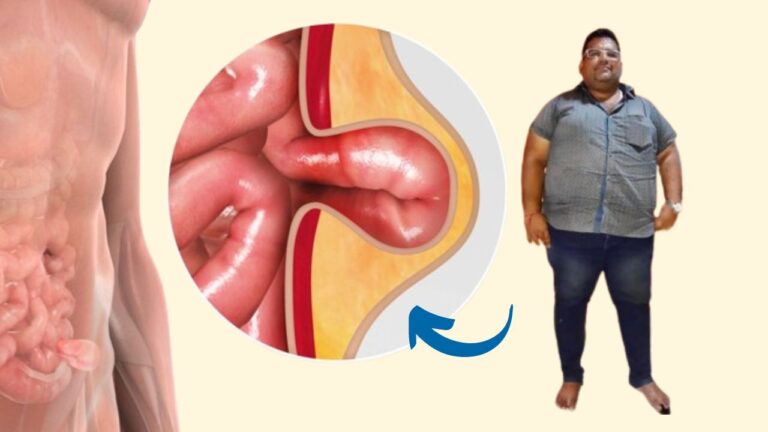
Overweight or obese?
Obesity is a complex medical condition characterized by an excessive accumulation of body fat that poses a risk to an individual’s health. It is commonly assessed using the body mass index (BMI), which is calculated by dividing a person’s weight in kilograms by the square of their height in meters [BMI = weight in kg / (height in meters)²].
While BMI is a useful screening tool, it does not directly measure body fat percentage or distribution. Obesity is generally classified into different categories based on BMI ranges:
Class I Obesity: BMI between 30.0 and 34.9
Class II Obesity: BMI between 35.0 and 39.9
Class III Obesity (also known as morbid obesity): BMI of 40.0 or higher
Obesity results from a combination of genetic, environmental, and behavioral factors. Some common causes and risk factors include:
Overeating and poor diet: Consuming more calories than the body needs, particularly from high-calorie and processed foods, can contribute to weight gain.
Sedentary lifestyle: Lack of physical activity and prolonged periods of sitting or inactivity reduce calorie expenditure and can lead to weight gain.
Genetics: There is evidence to suggest that genetics play a role in an individual’s susceptibility to obesity. Certain genetic variations can affect metabolism, appetite regulation, and fat storage.
Environmental factors: Environmental factors such as easy access to high-calorie foods, increased portion sizes, food marketing, and socioeconomic status can influence dietary choices and contribute to obesity.
Medical conditions: Certain medical conditions like hypothyroidism, polycystic ovary syndrome (PCOS), and Cushing’s syndrome can contribute to weight gain and obesity.
Obesity can have a significant impact on overall health and is associated with various complications and increased risk of developing other medical conditions, including:
1. Type 2 diabetes
2. Cardiovascular diseases (e.g., heart disease, stroke)
3. Hypertension (high blood pressure)
4. Dyslipidemia (abnormal blood lipid levels)
5. Sleep apnea and other breathing difficulties
6. Joint problems and musculoskeletal disorders
7. Certain types of cancer (e.g., breast, colorectal)
8. Non-alcoholic fatty liver disease (NAFLD)
9. Hernias
10. Depression and other mental health disorders
11. Reduced fertility and complications during pregnancy
The management and treatment of obesity typically involve a combination of lifestyle modifications, dietary changes, increased physical activity, behavioral therapy, and, in some cases, medications or bariatric surgery. It is essential to consult with healthcare professionals, such as doctors, dietitians, or weight management specialists, to develop an individualized plan for weight loss and long-term weight maintenance.
How does obesity contribute to the development of hernias?
Obesity can contribute to the development of hernias through various mechanisms. The excess weight and increased abdominal fat in obese individuals can put added strain on the muscles and tissues in the abdominal region, leading to a higher risk of herniation. Here are some ways in which obesity can cause or contribute to hernias:
Increased intra-abdominal pressure: Obesity is often associated with increased intra-abdominal pressure due to the accumulation of fat in the abdominal cavity. This elevated pressure can weaken the abdominal muscles and create gaps or openings through which organs or tissues can protrude, leading to hernias.
Weakened connective tissue: Obesity can negatively impact the strength and integrity of connective tissues, including muscles and tendons. Excessive adipose tissue (fat) can infiltrate and replace healthy muscle fibers, weakening the supporting structures of the abdominal wall. Weakened connective tissue increases the likelihood of hernia formation.
Strain during physical activity: Excess weight places additional strain on the muscles and tissues of the abdominal wall, especially during physical activity or when lifting heavy objects. The combination of increased intra-abdominal pressure and the extra load can overload weakened areas, potentially leading to hernias.
Poor nutrition and tissue health: Obesity is often associated with a poor diet and nutrient imbalances. Inadequate intake of essential nutrients, such as proteins and vitamins, can impair the strength and healing capacity of tissues, including those in the abdominal wall. Weakened or compromised tissues are more susceptible to herniation.
Increased risk of certain hernias: Obesity has been linked to an increased risk of specific types of hernias. For example, inguinal hernias (occurring in the groin area) and umbilical hernias (around the belly button) are more common in obese individuals due to the strain and pressure on the weakened abdominal wall.
It is important to note that while obesity can contribute to hernia development, not all obese individuals will develop hernias, and hernias can occur in individuals with a healthy weight as well. Other factors, such as genetic predisposition, lifestyle factors, and previous surgeries or injuries, can also influence hernia formation.
Managing obesity through weight loss and adopting a healthy lifestyle, including regular exercise and a balanced diet, can help reduce the risk of hernias. In cases where a hernia has already developed, weight loss may be recommended as part of the treatment plan to reduce the strain on the affected area and minimize the risk of recurrence after surgical repair.
Read also; The Cost of Bariatric Surgery in India
Why We Are?
- Asia's Trusted Bariatric Center
- Centre of Excellence
- Patient Trusted Highly Volume Bariatric Center in Mumbai
- EMI, Cashless & Mediclaim Facilities are Available
- Daily Patients Follow-up after Bariatric Surgery
- Patient Support Group Every Month
- Obesity Awareness Program
- Available with Latest Technologies
- 18+ Experience in Weight Loss Bariatric Surgery
- 300+ Weight Loss Diet Plan & Recipes
- Highly Trained & Experienced Bariatric Nutritionist
- Patient WhatsApp Chat Group
- & Many More
Medically reviewed by Dr. Manish Motwani, Bariatric & Metabolic Laparoscopic Bariatric Surgeon — Curated by Ruchika Bachwani


